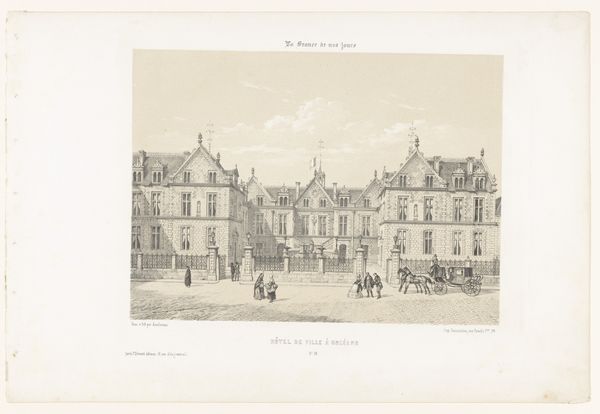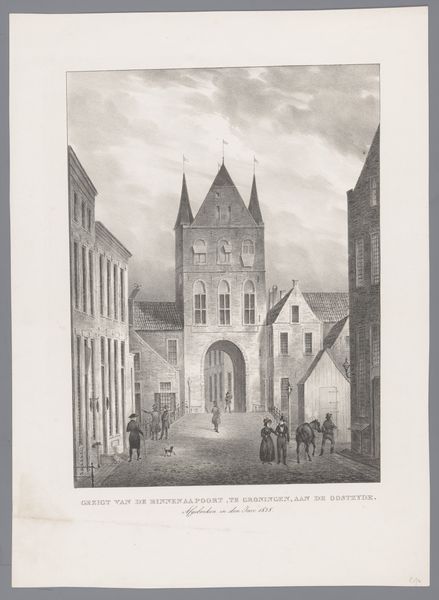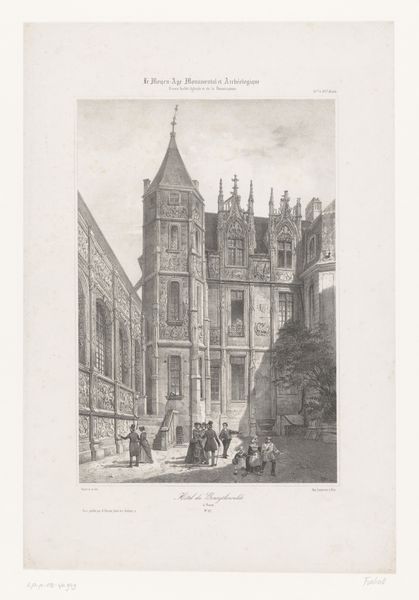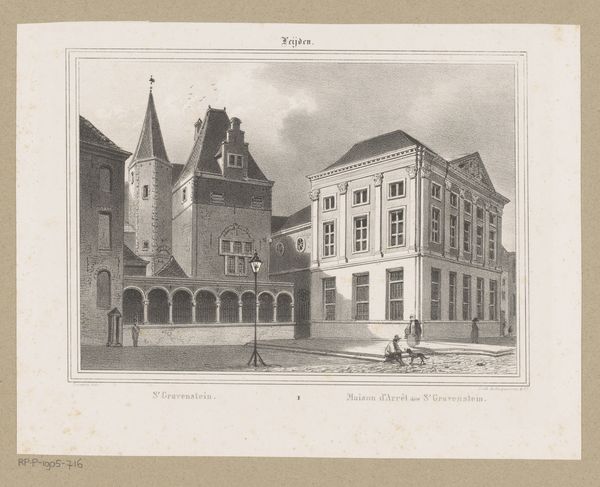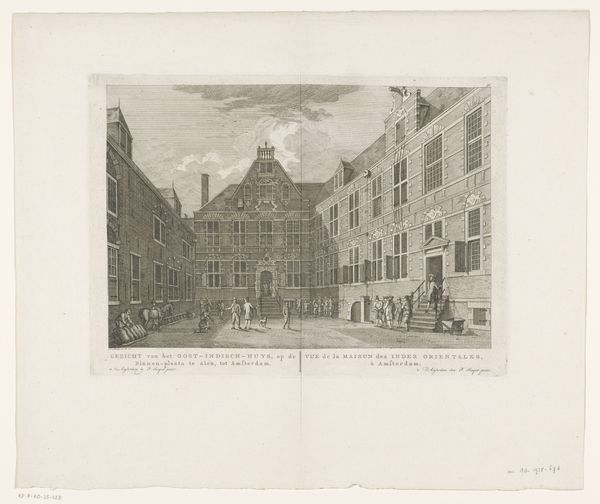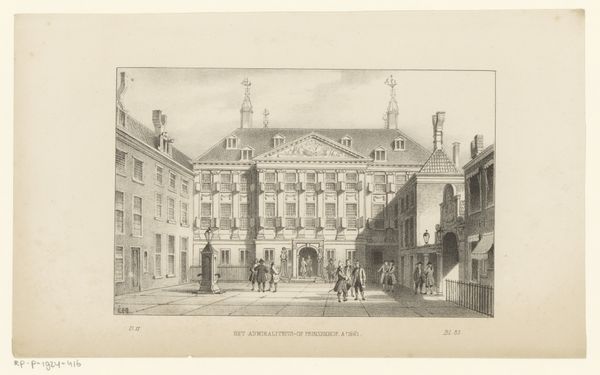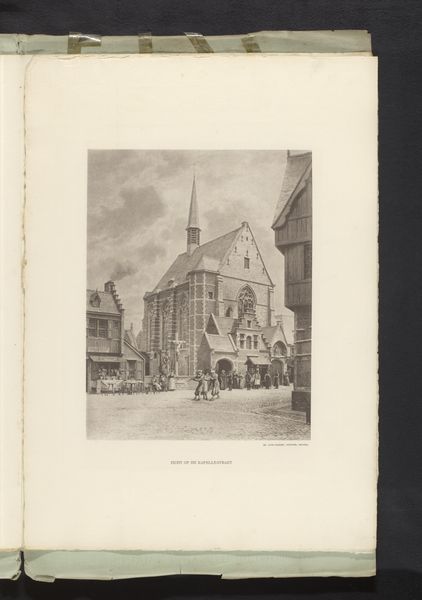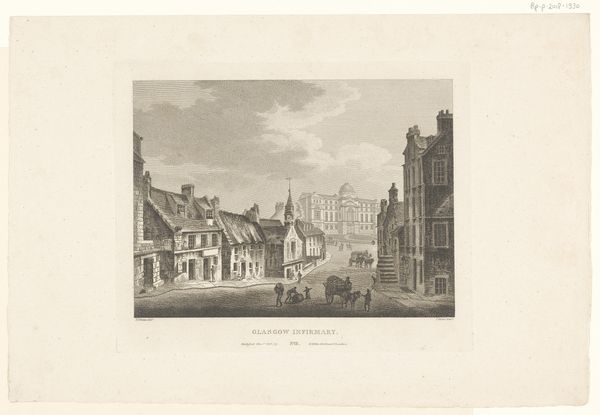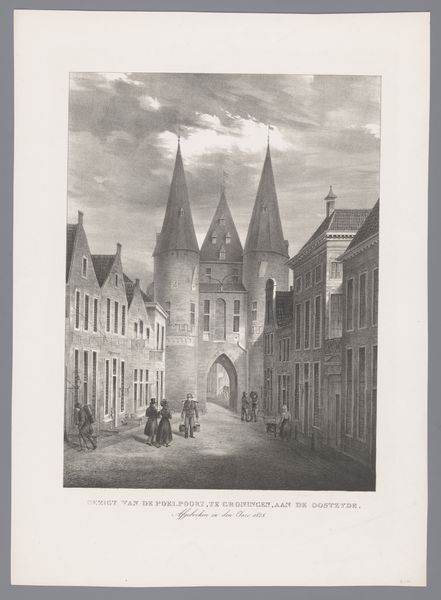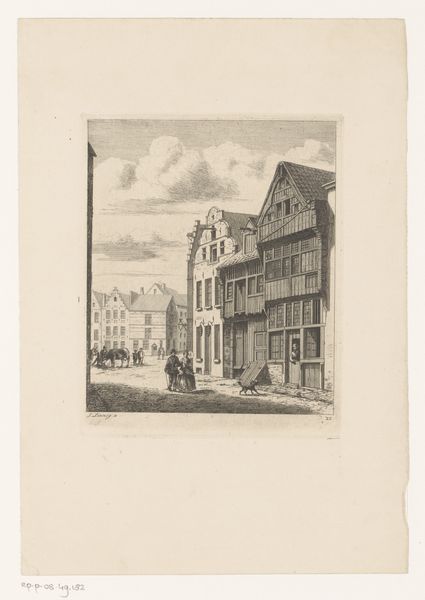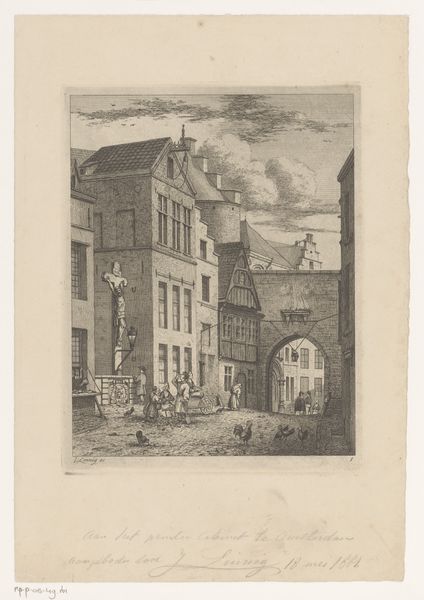
Zicht op de binnenplaats van het Palais Jacques-Coeur in Bourges 1856 - 1858
0:00
0:00
leonaugusteasselineau
Rijksmuseum
Dimensions: height 433 mm, width 290 mm
Copyright: Rijks Museum: Open Domain
Editor: So this etching by Léon Auguste Asselineau, dating back to sometime between 1856 and 1858, captures a courtyard view of the Palais Jacques-Coeur in Bourges. The Romanticism really shines through in its aged, almost dreamlike quality. What social and historical elements do you feel shape how we should interpret this particular cityscape? Curator: The etching portrays Bourges during a period of increasing interest in medieval architecture, largely influenced by Romanticism’s fascination with the past. This renewed interest coincided with—and in some ways was driven by—the rise of heritage movements aiming to preserve historic buildings. Asselineau’s choice to depict the Palais Jacques-Coeur places the building, and the social values it represented, directly into a broader discussion of national identity and historical consciousness, wouldn't you agree? Editor: Yes, that makes perfect sense. So, by creating this etching, Asselineau is almost making an argument for its preservation? Curator: Precisely! Etchings like this served a dual purpose: they were aesthetic objects in their own right and a form of documentation and promotion. The distribution of such images, often through print series or illustrated books, shaped public opinion about the value of historical monuments and implicitly critiqued urban modernization that might threaten them. What do you make of the figures in the courtyard? Editor: Well, they seem rather small compared to the architecture itself. Almost like they are there to showcase the magnitude and age of the architecture, which in turn may emphasize its significance. Curator: Good observation. The figures add a sense of scale, but they also represent the contemporary population engaging with their history. That the artist has them gathered here emphasizes their, and our, inheritance of the building and its values. Considering this was during a period of significant socio-political changes in France, that inheritance was something to consider critically, especially in respect to buildings that symbolize aristocracy, like this one. Editor: This makes me consider architecture not just as aesthetic, but also a form of dialogue between the past and present. Thanks! Curator: Indeed. And Asselineau's etching becomes an active participant in that dialogue.
Comments
No comments
Be the first to comment and join the conversation on the ultimate creative platform.
